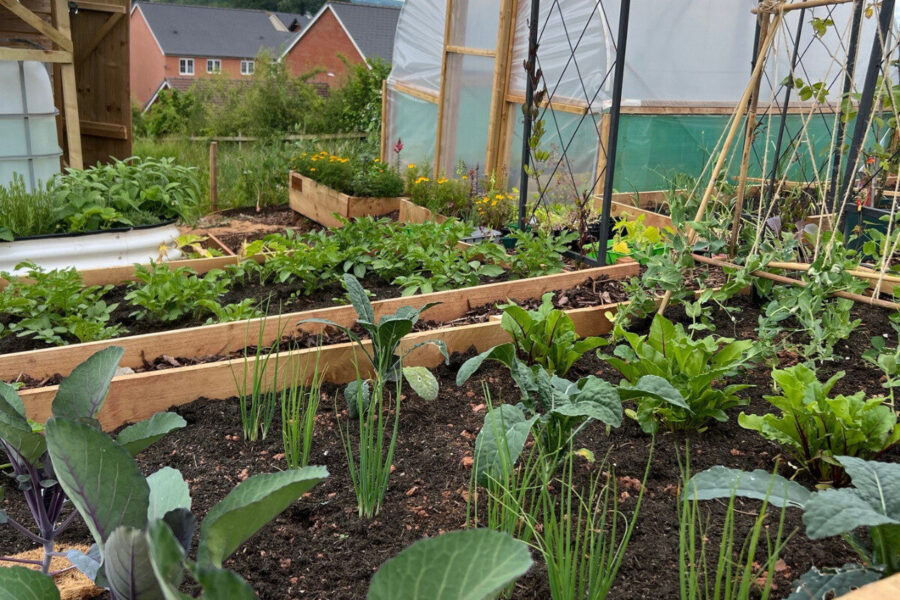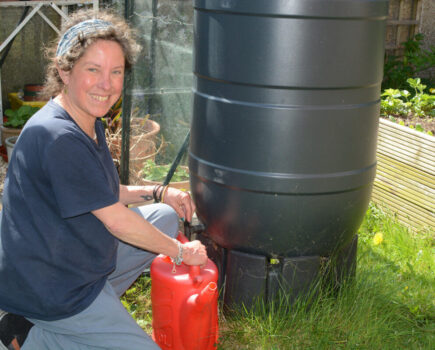Becky Searle reveals her top tips to help you get the best out of your allotmenteering
Taking on a new allotment is such an exciting adventure – you’re probably dreaming of juicy homegrown tomatoes, warmth from the sun, and crisp carrots fresh from the earth.
Once you have your plot or part of your plot set up, you’re probably wondering how you can make these dreams a reality. The truth is that as with any new project, you’re likely to encounter some challenges, usually related to every site being different, and you needing to get to know the nuances of that particular green space.
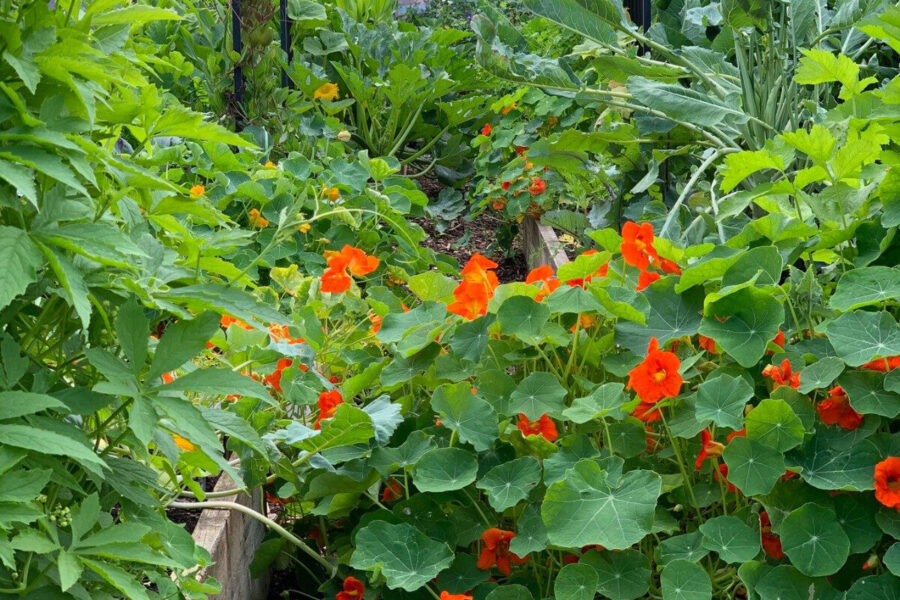
1. Start small and plan
If you’re new to allotmenteering, it can be pretty overwhelming at first, so starting small will ease you into it. Make a plan of where everything will go and then work on that vision bit by bit. If you have lots of clearing to do, this will help you get started with something fun sooner.
2. Use perennials
Using perennial vegetables, fruit trees and fruit bushes is one of the best ways to get food from your allotment with very little work. Once planted, you can sit back and enjoy the harvests. If your plot is exposed and windy, think about using fruit trees and bushes as a windbreak around the outside of your plot, also.
3. Collect rainwater
The sooner you get your rainwater collection system up and running, the sooner you can use it. You will use a lot of water and there won’t be much rain (we hope) in summer, so setting up in spring will help you have a full tank by peak growing season. Rainwater is not only more environmentally friendly, but it also contains a load of nutrients that help your plants to thrive.
4. Start composting
Like rainwater collection, the sooner you start making your own, the sooner you can benefit from it. Most people taking over a new plot will need to compost some weeds, so to make sure they don’t spread through your compost, leave them to dry out in the sun or put them in a bucket of water for a few weeks to drown them before adding them to the pile.
5. Mulch
Using compost or well-rotted manure to mulch your beds will help to aerate your soil, add nutrients and improve drainage. Whether your soil is sandy, loamy, clay or anything in between, it probably needs some organic matter.
Give your soil as much as you can in the first year and if your plants struggle, try to give them more the following year. If the plants are happy, keep applying a thin layer once a year to keep the organic matter levels replenished.
6. Keep your beds tidy
Keeping tidy beds will not only reduce competition with weeds, it will also mean there are fewer places for pests to hide. A mulched bed will be easy to run a hoe through and will help suppress your weeds.
Avoid mulching with anything that will create habitat for beasties like slugs to hide. Dead leaves, wood chips, twigs or bark all make excellent hiding places, so keep these off your beds themselves.

7. Try your luck
If you don’t know yet what might be out there ready to eat your plants, do this: sow way more of something like lettuce than you need, and plant them out when big enough. If they disappear, you’ll need to do some detective work to find out what has got to them.
Once you know what is likely to be eating your crops, you can set up physical barriers such as cloches or plan how to reduce damage by said plant muncher.
8. Use a greenhouse
Growing plants in a greenhouse before planting them out will give them a good start without the threat of being eaten. As the season progresses, growth will speed up and your seedlings will be more able to fend for themselves. I recommend growing plants until they are a good size, at least 4-5 inches tall (depending on the plant), so they have the best chance of survival.
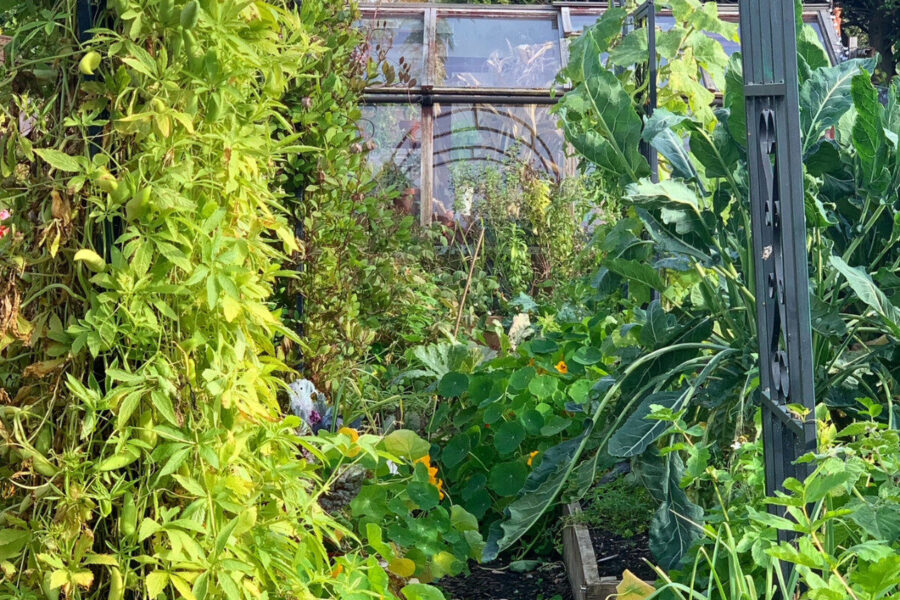
9. Plan your planting
Know what you want to plant, and choose the best location for each. Consider whether one crop will shade out another, and make sure you have your spacings worked out, too. This will help you understand how many seeds to sow and ensure you make the most of your beds.
Try to ensure that you have something ready to fill spaces left when you harvest a crop. Keeping your soils covered with crops will help build soil health and reduce weeds.
Utilise ‘catch crops’ (fast-growing crops grown between successive plantings of a main crop) like radishes, rocket and turnips and ‘cover crops’ like field beans to make this easier. I like to keep a few spare seedlings in my greenhouse to make sure I can plug any unexpected gaps too!
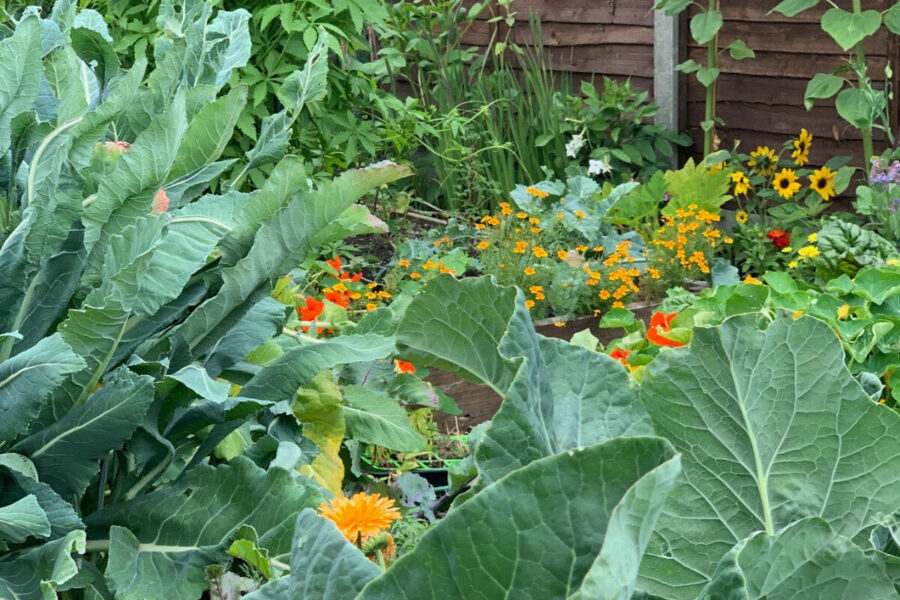
10. Think biodiversity
Consider building biodiversity on your allotment as your number one priority. By encouraging in a wider range of predators, and using organic methods, you will help balance the ecosystem and reduce pest numbers in the long run. Creating habitats such as log piles, a small pond, a wildflower area, or even just a patch of weeds will help your wildlife feel at home and help reduce the amount of work you have to do to protect your crops.
Whether you’re new to allotmenteering or an old hand with a new plot, be patient with what nature throws your way. Respect the processes at work, and understand that pests are an important part of any ecosystem.
Try to celebrate your successes and learn from your failures. Happy plotting!
Becky’s book Grow a New Garden teaches you everything you need to know about starting a garden or transforming your space. It combines Becky’s background in ecology with her horticultural knowledge to bring you a truly unique book. Grow a New Garden focuses on building the health of your garden and soil to create a beautiful and thriving outdoor space, that is great for the environment and the gardener. It is on sale now.
Find more tips, advice and articles like this at the Amateur Gardening website. Subscribe to Amateur Gardening magazine now

